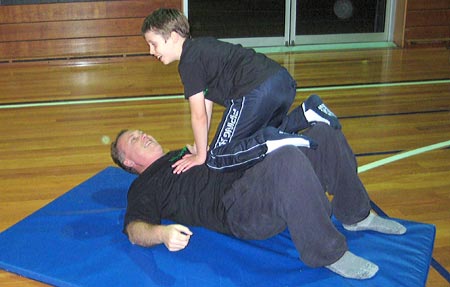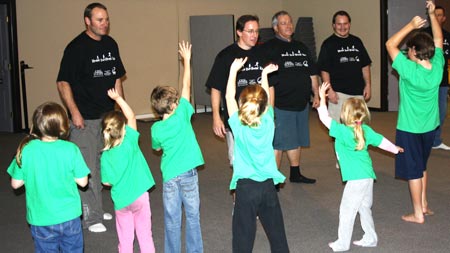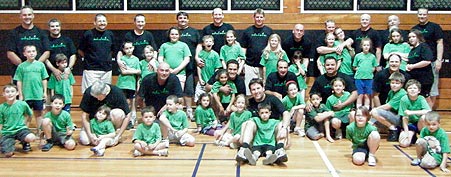Results from the HDHK University trial
Overview
The HDHK program is unique in that it is designed to engage fathers as key agents of behavior change in their families. It is one of the few programs which exclusively target overweight fathers to improve their weight profile, physical activity and dietary behaviours.
The program was developed and trialed at the University of Newcastle during 2008/2009. The trial aimed to help fathers lose weight and also to investigate if fathers could positively influence the physical activity and eating behaviors of their children. It was hypothesised that in losing weight, fathers would be more likely to role model positive health behaviors and create healthier home environments for their children. The weight loss findings from the trial program showed a higher level of weight loss among participants compared to other weight loss programs.
Results for the fathers
In the trial program, fathers significantly improved their health profiles and 85% of fathers achieved a weight loss of greater than 5% of their body weight. Fathers also:
- reduced their waist circumferences
- reduced their blood pressure and resting heart rates
- increased their rates of physical activity
- decreased their kilojoule intake
- improved their overall diet
Full results are available here (pdf file 25kb)
Importantly, fathers maintained improvements from 3- to 6-months after the program, despite no contact between researchers and participants.
Results for the children
Children who participated with their fathers in the HDHK program became more active and fitter and, importantly, ate more healthily. As a result at 6-month follow-up the children had:
- improved their physical activity levels
- reduced their resting heart rate
- decreased their kilojoule intake
The increased physical activity levels and lower resting heart rate seen in children indicate the effectiveness of the strategies used in HDHK to improve physical activity and fitness levels. This finding adds to the literature indicating that parental modelling of physical activity is associated with child physical activity. As part of the program fathers were encouraged to engage in physical activities with their children each day. During the program special father-child sessions were held. These sessions focused on teaching fathers and children the importance of physical activity to improve physical fitness, fundamental motor skills, rough and tumble play and fun and active games.
Children’s eating patterns (or dietary intake) also improved and this supports research showing how modelling of healthy eating by parents can influence children’s dietary intake. Further, the reduction in kilojoule intake for children shows that children and their families had modified their eating habits in a sustainable way. This provides evidence that fathers can have a positive impact on their children’s dietary intake and further, that the fathers remembered information and implemented ideas on healthy eating from the HDHK program.
Conclusions
The HDHK program was able to recruit fathers, retain them in the program with high attendance levels and achieve high levels of overall satisfaction relating to structure, content, instruction and impact reported. The project to develop the HDHK program showed that it is possible to recruit and engage men in a weight loss program, achieve clinically important weight loss and improve health behaviors of children. This was achieved in a group program and it is possible that this may be a more cost effective approach than separate interventions.
An important aspect of the HDHK program is the way in which fathers are promoted as role models for their children. It was concluded that the significant improvements in health-related outcomes and physical activity for fathers, was in part, related to their motivation to role model healthy behaviors for their children. Similarly, children were also taught to role model and encourage their fathers to adopt healthy behaviours. Ultimately therefore both fathers and children mutually reinforced healthier behaviours.
Future family-based programs should consider how best to include and engage both fathers and mothers in obesity treatment and prevention interventions. Engaging both parents may optimise the effectiveness of programs in reducing obesity-related risk factors long term.



